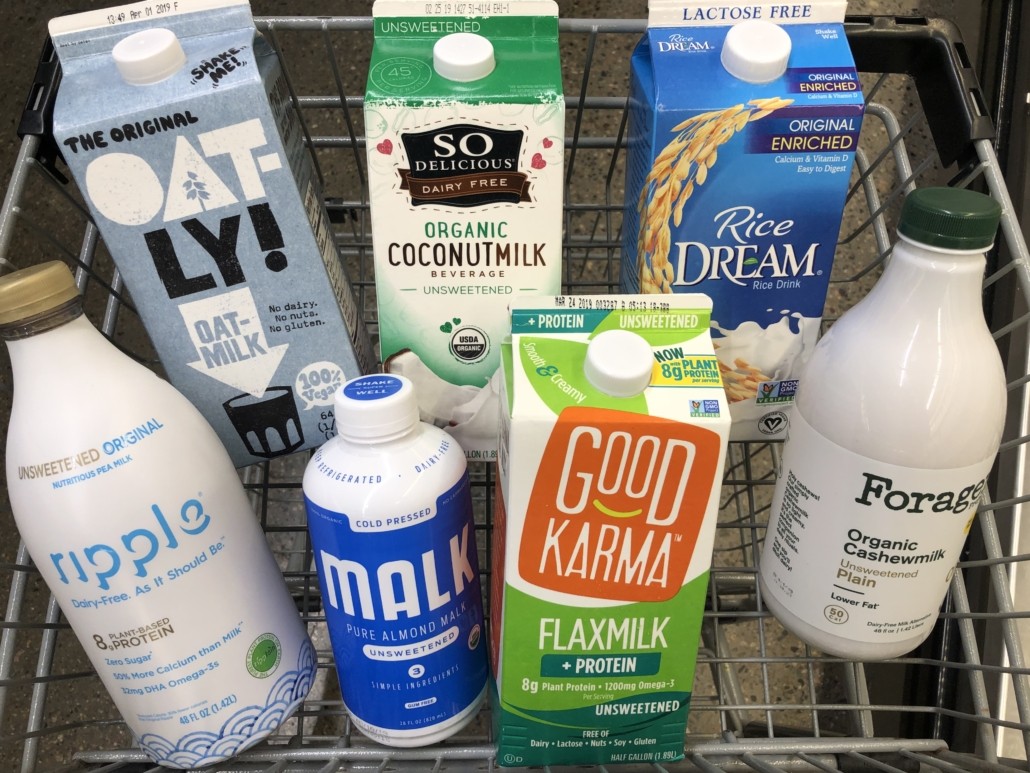Almond milk is a popular dairy alternative, but how does its calcium content stack up against cow’s milk? COMPARE.EDU.VN provides a detailed comparison to help you make an informed choice based on your dietary needs. Understanding the calcium levels, nutritional differences, and health considerations of both almond milk and cow’s milk empowers you to select the best option.
1. What are the Key Differences Between Almond Milk and Cow’s Milk?
Almond milk and cow’s milk differ significantly in their nutritional profiles, origins, and potential health benefits. Cow’s milk is a dairy product derived from cows, while almond milk is a plant-based beverage made from almonds and water. These differences make each option suitable for different dietary needs and preferences.
1.1. Nutritional Value
Here’s a general comparison of the nutritional content per 8-ounce (1 cup) serving:
| Nutrient | Cow’s Milk (Whole) | Almond Milk (Unsweetened) |
|---|---|---|
| Calories | 149 | 30 |
| Fat | 8g | 2.5g |
| Protein | 8g | 1g |
| Carbohydrates | 12g | 1g |
| Calcium | 305mg (31% DV) | 450mg (35% DV) |
| Vitamin D | 2.5mcg (13% DV) | 2.5mcg (13% DV) |
| Vitamin E | 0.2mg (1% DV) | 6.8mg (45% DV) |



DV = Daily Value
Almond milk is generally lower in calories and fat than cow’s milk, making it a suitable option for those managing their weight. However, it also contains significantly less protein. Many brands of almond milk are fortified with calcium and vitamin D to match or exceed the levels found in cow’s milk. Always check the nutrition label, as values can vary by brand.
1.2. Production and Origin
Cow’s milk is an animal product, while almond milk is plant-based. Cow’s milk production involves dairy farming, which raises environmental and ethical considerations for some consumers. Almond milk is made by blending almonds with water and then straining the mixture to remove the solids.
1.3. Lactose Content
Cow’s milk contains lactose, a sugar that some people have difficulty digesting, leading to lactose intolerance. Almond milk is naturally lactose-free, making it a suitable alternative for individuals with lactose intolerance.
1.4. Allergen Considerations
Cow’s milk is a common allergen, especially in children. Almonds are also a known allergen. People with allergies to dairy or nuts need to choose their milk alternatives carefully.
1.5. Environmental Impact
The environmental impact of milk production is a growing concern. Dairy farming contributes to greenhouse gas emissions, water usage, and land degradation. Almond milk production also has environmental impacts, particularly related to water usage in almond-growing regions.
2. Calcium Content: A Detailed Comparison
Calcium is an essential mineral for bone health, muscle function, and nerve transmission. The recommended daily intake of calcium for adults is around 1000-1300 mg, depending on age and gender. Let’s take a closer look at how almond milk and cow’s milk compare in terms of calcium content.
2.1. Calcium in Cow’s Milk
One cup (8 ounces) of cow’s milk typically contains about 305 mg of calcium, which is approximately 31% of the daily value (DV). The calcium in cow’s milk is naturally occurring and is highly bioavailable, meaning the body can easily absorb and utilize it.
2.2. Calcium in Almond Milk
Unfortified almond milk contains very little calcium naturally. However, most commercial almond milk brands are fortified with calcium carbonate to increase their calcium content. Fortified almond milk usually contains around 450 mg of calcium per cup, which is about 35% of the DV.
2.3. Bioavailability of Calcium
The bioavailability of calcium in fortified almond milk is a topic of research. Some studies suggest that calcium carbonate is well-absorbed, while others indicate that it may not be as bioavailable as the calcium in cow’s milk. Factors like vitamin D levels and the presence of other nutrients can affect calcium absorption.
2.4. Comparing Calcium Absorption
While almond milk may have a higher calcium content on the label, the actual amount of calcium absorbed by the body can vary. Cow’s milk contains lactose and vitamin D, which enhance calcium absorption. Fortified almond milk relies on the body’s ability to absorb calcium carbonate, which may be less efficient for some individuals.
2.5. Considerations for Vegans and Dairy-Free Diets
For individuals following vegan or dairy-free diets, fortified almond milk can be a significant source of calcium. It’s important to choose brands that are fortified with calcium and vitamin D to ensure adequate intake of these essential nutrients.
3. Health Benefits of Calcium from Almond Milk and Cow’s Milk
Both almond milk and cow’s milk can contribute to overall health by providing calcium. However, their additional health benefits differ due to their unique nutritional compositions.
3.1. Bone Health
Calcium is crucial for maintaining strong bones and teeth. Adequate calcium intake can help prevent osteoporosis and reduce the risk of fractures. Both cow’s milk and calcium-fortified almond milk can support bone health.
3.2. Heart Health
Some studies suggest that calcium intake is associated with a lower risk of heart disease. The potassium in cow’s milk and the healthy fats in almond milk can also contribute to cardiovascular health.
3.3. Muscle Function
Calcium plays a role in muscle contraction and relaxation. Adequate calcium intake is important for maintaining healthy muscle function and preventing muscle cramps.
3.4. Nerve Transmission
Calcium is involved in nerve transmission and helps regulate nerve function. Insufficient calcium levels can lead to nerve-related problems.
3.5. Vitamin D Benefits
Many brands of both cow’s milk and almond milk are fortified with vitamin D, which is essential for calcium absorption and bone health. Vitamin D also plays a role in immune function and reducing inflammation.
4. Potential Downsides and Considerations
While both almond milk and cow’s milk offer health benefits, there are potential downsides to consider before making a choice.
4.1. Allergies
Milk allergy is common, particularly in children. Symptoms can range from mild digestive issues to severe allergic reactions. Almonds are also a known allergen. People with allergies to either dairy or nuts should avoid these products.
4.2. Lactose Intolerance
Cow’s milk contains lactose, which can cause digestive problems for individuals with lactose intolerance. Symptoms include bloating, gas, and diarrhea. Almond milk is naturally lactose-free and is a suitable alternative for those with lactose intolerance.
4.3. Added Sugars
Some brands of almond milk contain added sugars to improve their taste. Consuming too much added sugar can lead to weight gain, tooth decay, and other health problems. It’s best to choose unsweetened almond milk to avoid added sugars.
4.4. Carrageenan
Carrageenan is a common additive in almond milk that is used to thicken the beverage and improve its texture. Some studies suggest that carrageenan may cause inflammation and digestive problems in certain individuals.
4.5. Phytic Acid
Almonds contain phytic acid, which can bind to minerals like calcium and reduce their absorption. However, the amount of phytic acid in almond milk is generally low and is unlikely to significantly affect calcium absorption.
5. How to Choose the Right Milk for Your Needs
Selecting the right type of milk depends on your individual needs, dietary preferences, and health considerations.
5.1. Consider Your Dietary Needs
If you have lactose intolerance or a milk allergy, almond milk is a suitable alternative. If you need a high-protein option, cow’s milk may be a better choice. Vegans can opt for fortified almond milk to meet their calcium needs.
5.2. Read Nutrition Labels Carefully
Pay attention to the nutrition labels and check the calcium content, vitamin D levels, and added sugar content. Choose brands that are fortified with calcium and vitamin D and that are low in added sugars.
5.3. Consider Your Taste Preferences
Almond milk has a distinct flavor that some people enjoy, while others prefer the taste of cow’s milk. Try different brands and varieties to find one that you like.
5.4. Think About Your Budget
The cost of almond milk and cow’s milk can vary depending on the brand and location. Consider your budget and choose an option that fits your financial needs.
5.5. Consult with a Healthcare Professional
If you have specific health concerns or dietary restrictions, consult with a healthcare professional or registered dietitian to determine the best type of milk for your needs.
6. Almond Milk vs. Other Milk Alternatives
Almond milk is just one of many plant-based milk alternatives available on the market. Here’s a brief comparison of almond milk with other popular options:
6.1. Soy Milk
Soy milk is a good source of protein and is nutritionally similar to cow’s milk. It contains all essential amino acids, making it a complete protein source. However, soy is also a common allergen.
6.2. Oat Milk
Oat milk is known for its creamy texture and mild flavor. It’s a good source of fiber and beta-glucans, which can help lower cholesterol levels.
6.3. Coconut Milk
Coconut milk is high in saturated fat and has a distinct coconut flavor. It’s a suitable option for those who enjoy the taste, but it’s important to consume it in moderation due to its high fat content.
6.4. Rice Milk
Rice milk is low in fat and protein and has a mild, sweet flavor. It’s a good option for individuals with allergies to dairy, nuts, and soy, but it’s not as nutritionally dense as other milk alternatives.
6.5. Cashew Milk
Cashew milk is creamy and has a mild, nutty flavor. It’s low in calories and fat, but it’s also low in protein.
7. Recipes and Uses for Almond Milk
Almond milk can be used in a variety of recipes as a substitute for cow’s milk.
7.1. Breakfast
Use almond milk in cereal, oatmeal, and smoothies for a dairy-free breakfast option.
7.2. Coffee and Tea
Almond milk can be used as a creamer in coffee and tea. Some brands froth better than others, so experiment to find one that works well for you.
7.3. Baking
Substitute almond milk for cow’s milk in baking recipes such as cakes, muffins, and cookies.
7.4. Cooking
Use almond milk in soups, sauces, and other savory dishes. Be aware that it may have a slightly different flavor than cow’s milk.
7.5. Desserts
Almond milk can be used to make dairy-free ice cream, pudding, and other desserts.
8. Environmental Impact of Milk Production
The environmental impact of milk production is an important consideration for many consumers.
8.1. Dairy Farming
Dairy farming contributes to greenhouse gas emissions, water pollution, and land degradation.
8.2. Almond Milk Production
Almond milk production also has environmental impacts, particularly related to water usage in almond-growing regions.
8.3. Sustainable Choices
Look for brands that use sustainable farming practices and that are committed to reducing their environmental impact.
9. Frequently Asked Questions (FAQs)
9.1. Is almond milk a good source of calcium?
Fortified almond milk is a good source of calcium and often contains more calcium than cow’s milk. However, unfortified almond milk is low in calcium.
9.2. Is almond milk healthier than cow’s milk?
The health benefits of almond milk and cow’s milk depend on individual needs and dietary preferences. Almond milk is lower in calories and fat, while cow’s milk is higher in protein.
9.3. Can I use almond milk in baking?
Yes, almond milk can be used as a substitute for cow’s milk in baking recipes.
9.4. Does almond milk taste like almonds?
Almond milk has a mild, nutty flavor that some people enjoy.
9.5. Is almond milk suitable for children?
Almond milk can be part of a balanced diet for children, but it should not be used as a primary source of nutrition. Cow’s milk or fortified soy milk are generally better options for young children due to their higher protein content.
9.6. Is almond milk safe for people with nut allergies?
No, almond milk should be avoided by people with almond allergies.
9.7. Does almond milk contain lactose?
No, almond milk is naturally lactose-free.
9.8. What are the best brands of almond milk?
The best brand of almond milk depends on individual preferences. Look for brands that are fortified with calcium and vitamin D and that are low in added sugars.
9.9. Can I make almond milk at home?
Yes, you can make almond milk at home by blending almonds with water and straining the mixture.
9.10. How should I store almond milk?
Almond milk should be stored in the refrigerator and consumed within 7-10 days of opening.
10. Conclusion: Making an Informed Choice
Choosing between almond milk and cow’s milk depends on your individual needs, dietary preferences, and health considerations. Both options can be part of a healthy diet, but it’s important to consider their nutritional differences, potential downsides, and environmental impact. By understanding the key differences between almond milk and cow’s milk, you can make an informed choice that supports your overall health and well-being.
For more detailed comparisons and to explore other options, visit COMPARE.EDU.VN. We provide comprehensive information to help you make the best decisions for your health and lifestyle.
Are you still unsure which milk alternative is right for you? Head over to compare.edu.vn to explore even more detailed comparisons and reviews!
Address: 333 Comparison Plaza, Choice City, CA 90210, United States
WhatsApp: +1 (626) 555-9090
Website: COMPARE.EDU.VN